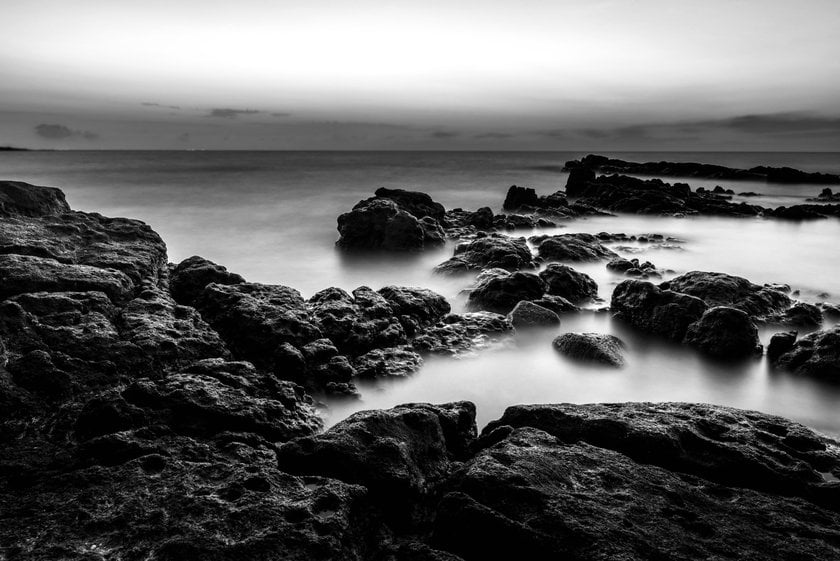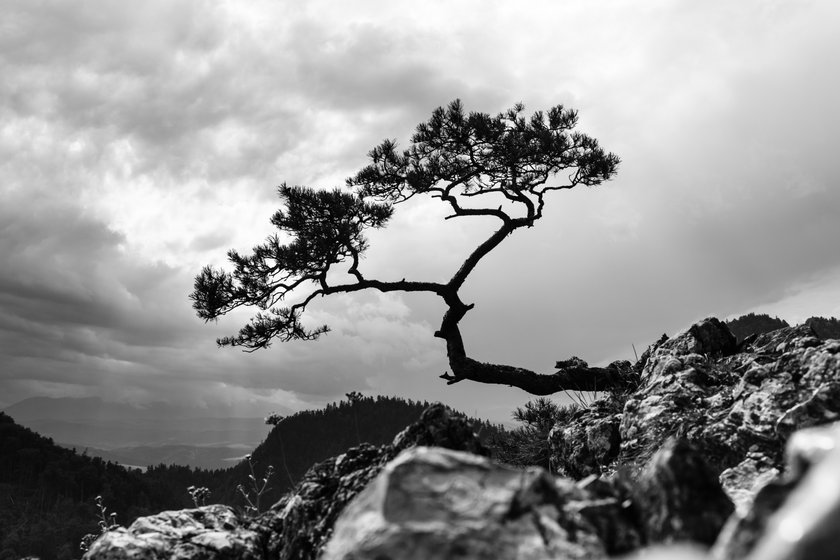Mastering the Art of Contrast in Black and White Photography
Last Updated on January 16, 2025

Grasping the art of contrast in black-and-white photography can transform ordinary scenes into captivating and powerful images.
Black and white photography is an eternal art that relies on contrasting black and white. Understanding this technique can help you create striking and powerful images. Mastering the light, the shadow, and the shades of gray between them is essential. It brings depth and dimension to your photos.
In this article, we look at some principles and techniques for achieving perfect black-and-white contrast. You will develop your skills with the right knowledge as a beginner or a professional. Mastery of harmony is all it takes to create outstanding black-and-white shots in photography.
Understanding Black and White Contrast

Are black and white contrasting colors? Understanding black-and-white contrast is crucial in considering some striking photography. It is based on the difference in luminance or color that makes an object distinguishable from others within the same field of view. In black-and-white photography, distinction is the tool to bring life to the subject. It helps define the shapes, textures, and edges of the objects in the image. High-contrast ones have striking differences between dark and light areas, giving highly dramatic or catching pictures. Low-contrast prints contain a smaller range of tones and display softer and subtler characteristics.
The distinction between black and white can be truly mastered only if one pays a lot of attention to lighting and shadow. Consider the tonal range in your composition and know how to work with them to bring out your subject. Unique effects can be achieved through playing with different light sources and angles. Though color vs black and white photography will differ in visual experience, the contrast in black-and-white photography changes an ordinary scene into a powerful and artistic expression. For a step-by-step process, look at our guide on making pictures in black and white.
Are Black and White Contrasting Colors? A Quick Explanation
Black and white have been the ideal examples of contrasting colors. In the terminology of design and photography, they reflect the extreme polarities of the color scale: black absorbs all the light that falls on it while reflecting absolutely none. On the other hand, white reflects all the light coming toward it, emanating bright and pure.
The enormous difference between them has the effect of high contrast, which is visually startling. This interplay between light and dark adds depth and clarity, making elements stand out vividly. That’s why black-and-white imagery has always captivated art, fashion, and photography. The contrast does not only highlight details but also provokes strong feelings, which makes it a timeless and versatile choice.
The Power of High Contrast in Black and White Photography

High-contrast black-and-white photography commands attention immediately. The extreme difference between light and dark creates dramatic, visually stunning images. This technique accentuates the subject, bringing out its shape, texture, and details. The shadows add depth, which makes the photo three-dimensional. High contrast also denotes strong emotions and moods. It can make scenes much more dramatic, mysterious, or even nostalgic. This impactful visual appeal makes high-contrast black-and-white photography popular in fine art, portraits, and street snaps.
Mastering this style requires understanding lighting and composition. If possible, control of the light source and angles will help attain the desired effect. Yet, contrast levels can always be adjusted in post-processing to enhance the image further.
Find out more: Understanding Contrast in Photography
Tonal Contrast: Focusing on Light and Shadow
Tonal contrast in photography shows the difference between light and shadow. The method enhances textures, shapes, and depth. The pictures look visually appealing. Changing the source of light and the shadows lets photographers focus more on one part of a photo than another. It will enhance the subject’s details and mood.
High tonal contrast provides a dramatic effect that can be striking. A low-toned one provides a softer and subtler look. Proper use of this involves comprehending the interplay between light and shadow. It lets the photographer compose powerful, evoking compositions that attract notice and arrest the viewer’s eye. This technique holds the key to achieving professionalism in black-and-white photography.
Color Contrast in Monochrome Photos
In a monochrome photo, color contrast refers to the difference between shades of gray that take the place of different colors. This accentuates textures and delineates shapes, therefore creating depth in a picture. It is how photographers show certain things and make the composition more expressive: the variety of tones turns into a game of light and dark shades, guiding the viewer’s eye to some important details and making the subject prominent. Color contrast, used effectively in monochrome photography, may turn the most ordinary of scenes into visually stimulating works of art, showing the beauty in simplicity and the power of tonal variation.
Techniques for Enhancing Contrast in Black and White Images

Enhancing contrast in black-and-white snaps can significantly improve their visual impact and artistic quality.
Mastering Light and Shadow
It begins with an understanding of light and shadow. Strong, directional lighting produces dramatic contrasts that emphasize the features of a subject. Use natural or artificial sources to manipulate shadows and lighting, adding depth to your photos. Early morning and late afternoon light, known as golden hours, provide soft, long shadows to enhance your images. Try different angles of light to understand how this will affect the shadow and highlights on your subject.
Find out more: Black And White Night Photography: Light & Shadow In Harmony
Focus on Composition and Framing
What color frame for black and white photo? Composition and framing are important in black-and-white photography. Strong composition increases contrast by leading the viewer’s eye. Use the rule of thirds to place the key elements off-center. Leading lines bring attention and give depth. Framing subjects with natural or architectural elements creates a focal point. Consider negative space: solid black or white areas can emphasize the subject and create striking contrasts.
Emphasizing Lines, Shapes, and Textures
Black and white photography deeply depends on lines, shapes, and textures. These elements appear to become more prominent when the color is removed, which, in turn, evokes contrast. Look for strong lines and geometric shapes in your scenes. In black and white, rough surfaces and intricate patterns show their textures. Close-up shots show details that may go unseen in color. Observe the way light interacts with elements to make them look magnificent. Strong, well-defined lines, rich textures, and images with great contrast make visually intriguing shots. When framing your photos, consider what color for a frame will enhance these black-and-white prints.
Tools to Perfect Black and White Contrast

Tools for perfecting black and white contrast are important to create amazing images. Lightroom and Photoshop have the most powerful exposure and tonal balance adjustment tools, which let photographers emphasize detail and give depth to the picture. Another great tool that’s specific for black and white photography is Silver Efex Pro. It offers advanced controls for fine-tuning contrast and texture.
Luminar Neo offers a black and white image converter with intuitive tools for perfect contrast. So, why are black-and-white photos better? They eliminate all the distractions and focus on what is critical in the picture. This eternal fashion highlights shapes, textures, and emotions that give the image even more power and expression. Mastering these tools ensures your black-and-white photos stand out.
Wrap-Up
Great black-and-white photography could be done by mastering this art of contrast. Knowing light, understanding shadow, and using subtle gray tones will add depth and dimension to any photo. It will substantially improve your skills, whatever level you are in-professional or amateur.
Knowing why is contrast important in photography will help you in composing interesting images. The contrast makes the subject pop out, highlighting textures and details and making your photo more dynamic and interesting. Keep honing your approach. Soon, you will shoot striking black-and-white photos that will leave a lasting impression.
FAQ

What is the difference between tonal contrast and color contrast?
Tonal contrast emphasizes the difference between light and dark areas in a photo. Color contrast focuses on differences between colors. In black-and-white photography, tonal contrast is key for highlighting textures and shapes. Understanding what does seapa mean in black and white photos also adds depth to your work.
How can I practice seeing in black and white before shooting?
Practice shooting in black and white by using your camera’s monochrome mode. Visualize scenes in shades of gray, paying attention to light, shadow, and texture to help your eye train itself to see the range of tones.
How do I create high-contrast black-and-white photos in-camera?
Use strong, directional light, and modify exposure. For added depth, underexpose to deepen shadows; overexpose to lighten highlights. For a creative twist, learn how to make one color stand out in a black-and-white photo to draw attention to certain elements.






